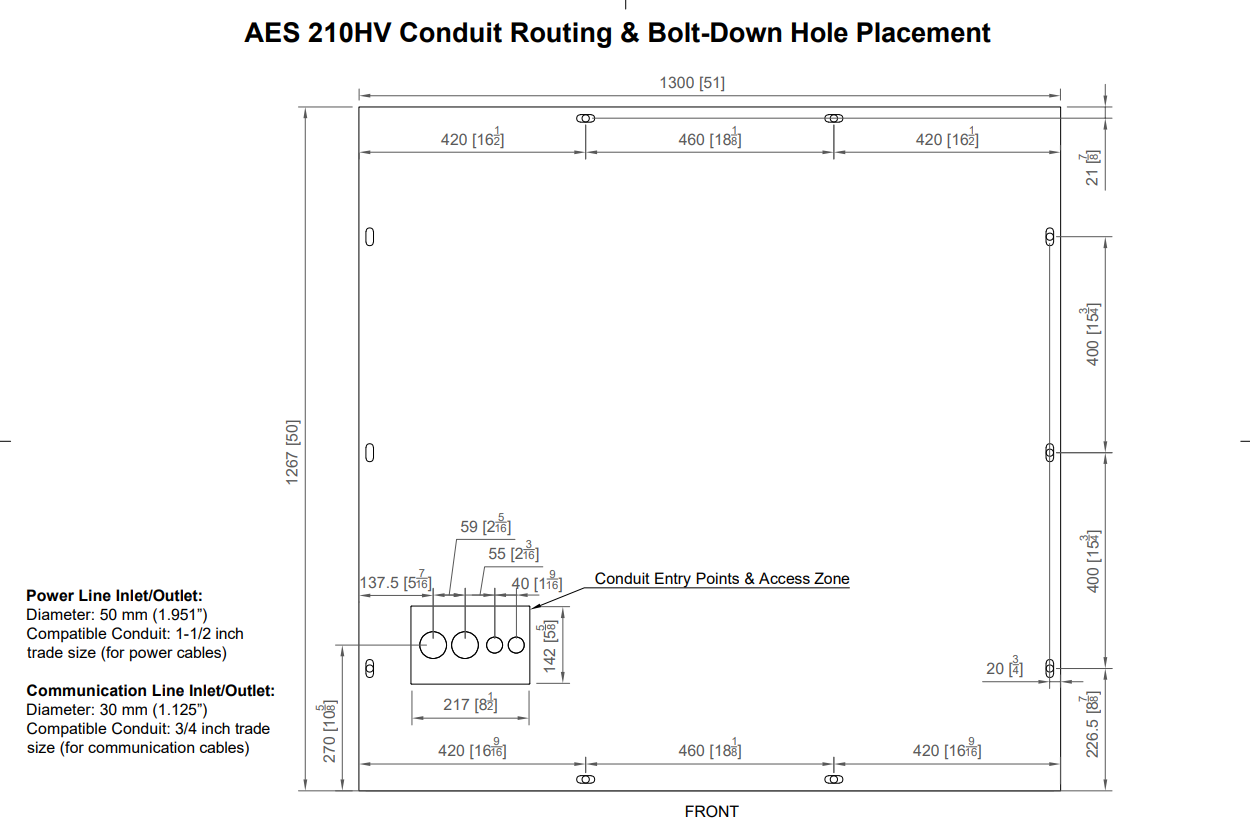Conduit and Cable Routing Guidelines

To reduce electromagnetic interference and ensure safe, reliable operation, use separate conduits for different wiring types:
DC Conductors
Use a dedicated conduit for high-voltage DC wiring between the AES 210HV cabinet and the inverter.
Two 50 mm (1.96") conduit holes are provided for 1½″ trade size conduit
Supports up to eight #4 AWG current-carrying conductors
240 Vac Connections
Run AC supply wiring to the AC Auxiliary System (UPS and TMS) in a separate conduit.
One 30 mm (1.12") conduit hole is provided for ¾″ trade size conduit
Supports two #10 AWG conductors plus ground
Communication Cables
Route CAT5/6 (or equivalent) communication cables in individual conduit to prevent signal interference and ensure stable data transmission.
One 30 mm (1.12") conduit hole is provided for ¾″ trade size conduit
Best Practices
Use appropriately sized conduits, rated for environmental exposure, and securely installed.
Keep DC, AC, and communication lines physically separated
This improves system reliability, simplifies service, and supports compliance with electrical codes and safety standards.

